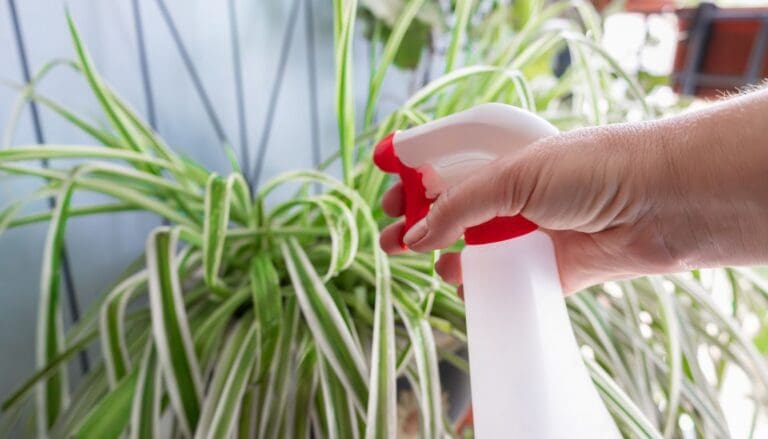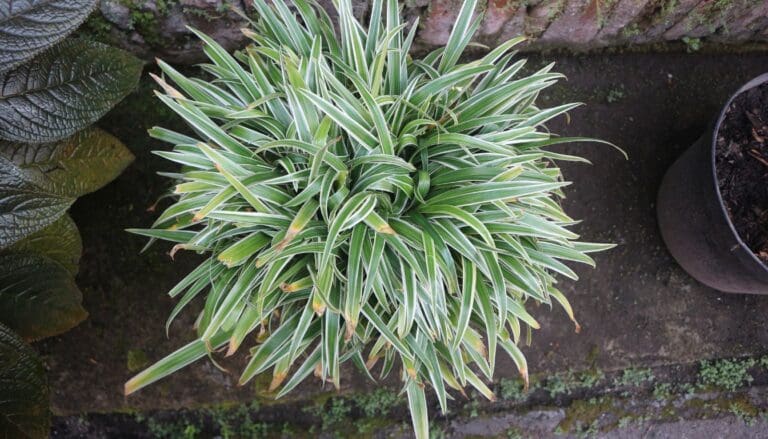6 Signs Your Peace Lily Is Dying? (+What To Do)
No houseplant collection is full without a beautiful, bounteous Spathiphyllum (Peace lily). This tropical species is an excellent autotroph to adopt as they are hardy and super easy to care for. But few unusual circumstances can make things go wrong, and that is when the plant starts showing signs of being unwell.
But what are the signs of a dying peace lily plant? Let’s find out.
Some common signs of a dying peace lily include leaves turning yellow or brown, drooping of leaves, brown spots on the leaves, wilting of foliage, heavy pest infestation, curling of leaves, and root rot. Most of these problems arise due to improper care routines.
This article will discuss the common signs that can lead to the death of your peace lily and how you can save the plant before it’s too late.

Please note: Simplify Plants is reader-supported. Some links in the post are affiliate links and I get a commission from purchases made through links in the post.
Signs to look for and their causes
Peace lilies can generally withstand adverse conditions and quickly bounce back to a healthy state with little care. However, not every hobbyist gets successful while treating this tropical species.
But is there any way to detect their not-so-well state? There are certainly many signs of understanding that the plant gives out to help you identify such problems.
Let’s go further to know about the signs of a dying peace lily.
- Brown spots or streaks on the leaves (causes: too much direct sun, bacterial infection, overwatering)
- Curling of leaves (Causes: sunburn, underwatering, low humidity)
- Yellowing of leaves (Causes: aging, nutrient deficiency, overwatering)
- Droopy leaves (Causes: overwatering, root rot, high-intensity light)
- Dried out leaves (Causes: underwatering, nutrient deficiency)
- Blackening of leaves (Causes: cold draughts, overwatering, fungal infection)
Let’s dive into the article to know more about the factors behind a dying peace lily and the solution.
Reasons why your peace lily may be dying
Peace lilies are tropical plants that thrive well in the moist, well-draining, and humus-rich soil of the forest floor, where they get dappled sunlight and a warm, humid climate.
Any significant drift in any of the environmental factors can put tremendous stress on the plant. Let’s find out about the issues that can be a matter of stress for this plant.
Overwatering

One of the potential causes behind a peace lily dying is overwatering. The common signs of an overwatered peace lily are yellowing leaves and browning tips and edges on the leaves.
Peace lilies are thirsty plants and love to thrive in moist soil, especially during hot seasons. But too much water with sogginess in the soil will make them sick, leading to many complications like root rot, pest infestation, fungal infection, etc.
Here are some considerations:
- Allow the soil to get dry between the watering sessions to keep the roots well oxygenated.
- Let the top inches of the soil mix dry out completely before watering. You can even check the soil moistness by inserting your finger 2-4 inches deep into the soil mix.
- Being a moisture-loving plant, the peace lily wilts dramatically when they need water. The best possible way to avoid overwatering is to water them just when they start to wilt. Over time you will gain experience about the best time to water.
- Never follow a regular schedule for watering your peace lily as the plant’s water needs depend on the environment and change from season to season. Plants need less water during winter.
- If you keep your plant’s pot inside a decorative outer container, make sure to check that no water is logged at the bottom of the vase.
- The best treatment for an overwatered plant is to let the soil dry out. If root rot sets in, you need to trim off the decaying roots as soon as possible.
Also read: How To Save An Overwatered Peace Lily? (Signs, Problems & Solution)
Underwatering
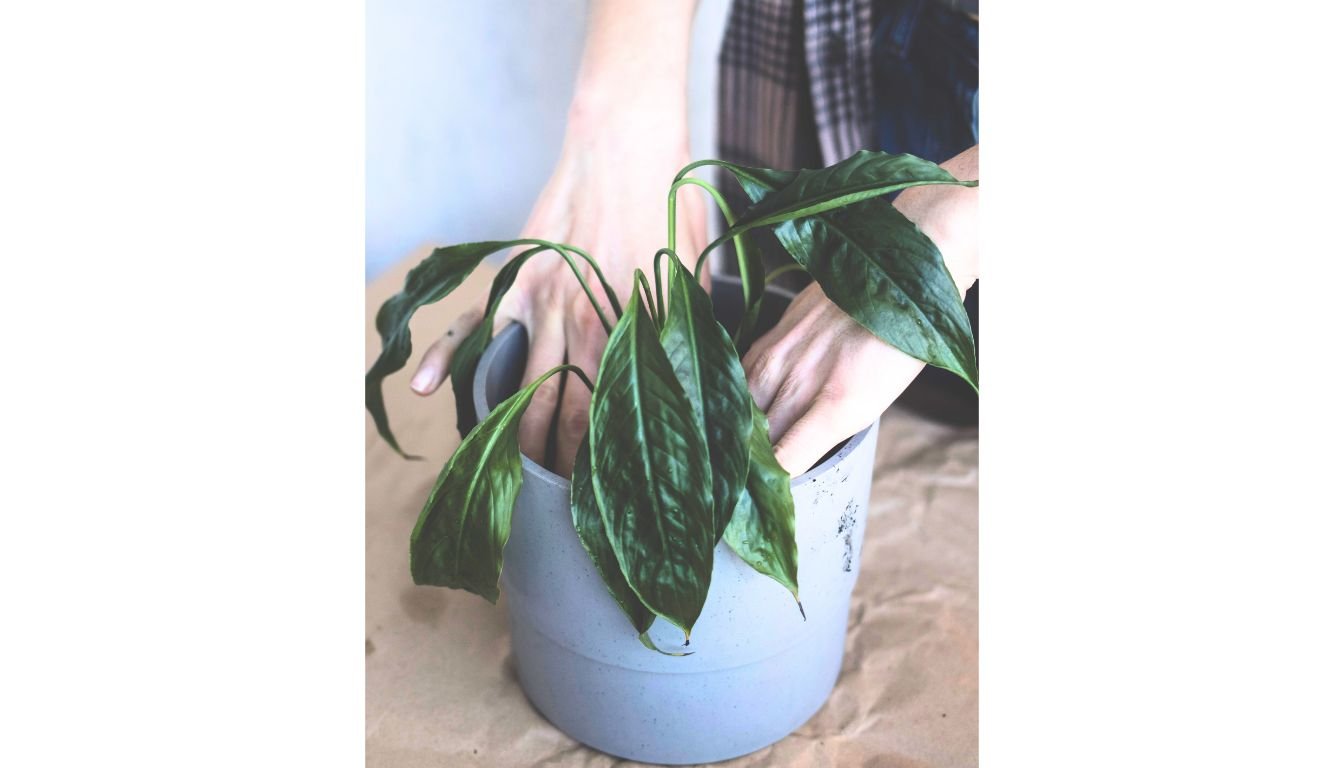
As these plants enjoy being on the moist side, be sure to give it a thorough watering if you witness wilting. Peace lilies generally spring back to their lustrous state if appropriately watered.
Whenever these plants undergo drought stress, they start showing signs. It’s pretty helpful that the plant “talks” to us about being thirsty.
However, if you stress your plant too much with underwatering, this prolonged period of dryness will affect the plant harshly, resulting in irreversible brown leaves, loss of lustrous growth, increased leaf loss, etc. The plant will never fully recover from that state.
Here are some considerations:
- Water your plant thoroughly if the soil mix appears loose, chunky, or cracked.
- Your plant can experience chronic drought if it is massively rootbound and the root ball is not getting adequate moisture. To cope with this problem, uproot the plant and inspect the root. You can insert a wooden stick inside the root system to check for any dryness.
- Apply the capillary method for watering the soil uniformly. First, mist the soil and then apply adequate water to it. The already moistened soil medium will make a passage for the water molecule to pass by capillary action. This allows an even distribution of water throughout the soil without much water loss.
Remember, don’t water your peace lily more frequently to make up for the underwatering, as you may end up drowning the roots. Just follow the regular schedule and monitor your plant correctly.
Also read: How Often Should A Peace Lily Be Watered? (Peace Lily Water Requirements)
Low temperature or drafts

Coming from the tropical region, peace lilies thrive well in room temperature that is not more than 75°F during the day and not less than 41°F at night. They generally prefer a uniform temperature without much fluctuation.
Temperature stress can be a prominent factor causing your peace lily to die. Exposure to temperatures less than 41°F results in cold-induced trauma with blackening of leaves and leaf loss.
Solution:
- Keep your plant in a well-insulated room far from the window.
- To keep the peace lily away from cold drafts, avoid keeping it on window sills as it can be unexpectedly cold there.
- Group your plants to conserve heat energy among them.
- Avoid watering your plant frequently during winter as it will reduce the temperature further.
While keeping your plant warm, remember never to keep your plants near any heating equipment like an oven, heater, etc.
Also read: What Temperature Is Best For Peace Lily? (Ideal Range+How To Maintain)
Improper lightening
Spathiphyllum is one of the best houseplants for low light as they prefer to grow under dappled sunlight in their native habitat. They can flower even in reasonably dim conditions, but they stagnate their growth if the light intensity is too low.
A prolonged period of low light hinders photosynthesis. Low light even can cause smaller leaves.
On the other hand, exposure to high-intensity light can affect the plant dramatically by causing sunburn. Extreme sunlight oxidizes chlorophyll and disrupts the plant’s average growth.
However, both the problems due to low and high-intensity light are easy to fix.
- Selecting a best-suited place for your peace lily can solve the majority of this light issue. Select a spot in your room a few feet away from the windowpane to allow bright but indirect light.
- This tropical species can prosper in north-facing windows and even under fluorescent light.
- Never keep the plant near the south-facing window during summer.
- To provide infused light to your peace lily, hang some semi-transparent curtains on the window.
Also read: What Kind Of Light Does A Peace Lily Need? (Peace Lily Light Requirements)
Diseases
Plants become more vulnerable when they remain under environmental stress. Several pathogens make their homes in such stressed-out plants.
Peace lilies are more susceptible to diseases caused by pathogens such as:
Cylindrocladium spathiphylli: This pathogen is the potential cause behind root rot that starts with reddish-brown lesions and leads to total root collapse. Early symptoms include yellowing of leaves, wilting.
Phytophthora parasitica is a common pathogen of Peace lily that infects the soil. It has similar symptoms to Cylindrocladium.
Treatment:
- Try to keep the leaves dirt and dust-free by cleaning them with a damp cloth once a week.
- Keep the foliage dry as most pathogens are prone to infect in a moist climate.
- Pathogenic spores of Phytophthora are highly infectious. After safely discarding affected parts apply fosetyl aluminum or metalaxyl to the remaining plant
- Discard the plant if it shows advanced symptoms. Treat the nearby plants with Triflumizole.
Also read: How To Treat Root Rot In Peace Lily? (Signs, Identification & More)
Pests
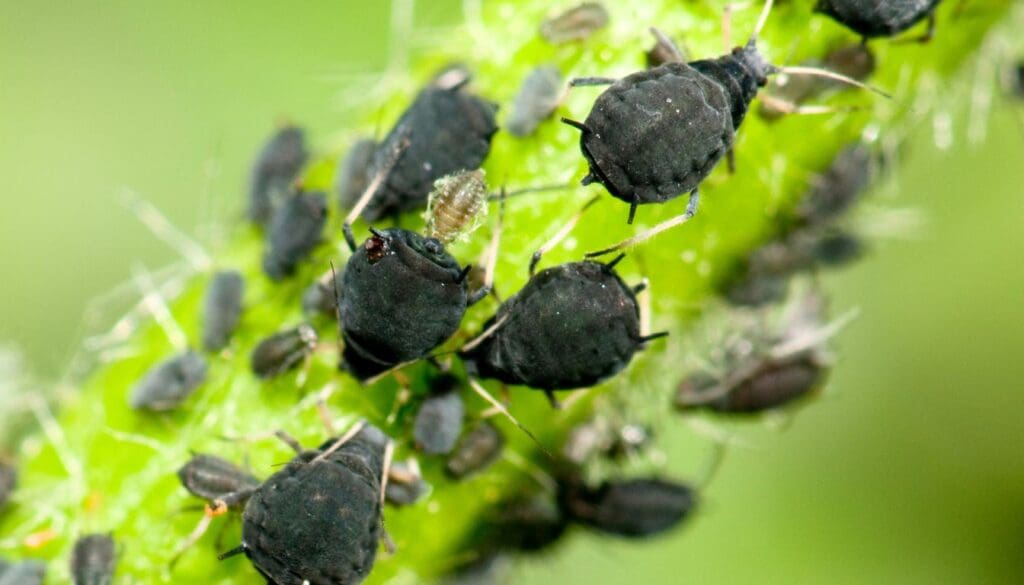
As long as you keep your plant free from pathogenic infection, your peace lily is unlikely to catch any pest infestation.
If you witness any such pest invasion, it is likely due to some underlying issue that has lowered your plant’s immunity.
Some of those unwelcome pests that inhibit your plant’s body are aphids, mealybugs, spider mites, and scales.
Most of these pest species feed on the plant’s sap, make holes on the stem, and drain nutrients. Plants that are highly infected become droopy with blackened leaves. Worsening of an infestation can even cause irreversible health hazards.
Treatment:
- You can eliminate these pests by dabbing rubbing alcohol.
- In case of high infection, use an insecticidal soap solution. Soak the plant in the soapy solution, soak underneath the leaves. The solution needs to come in contact with the pests to kill them. Repeat this gentle remedy every four to seven days until the situation becomes better.
- You can also apply diluted neem oil solution with a spraying medium.
Also read: Do Peace Lily Attract Bugs? (Identification+How ToGet Rid Of Them)
Other stress factors
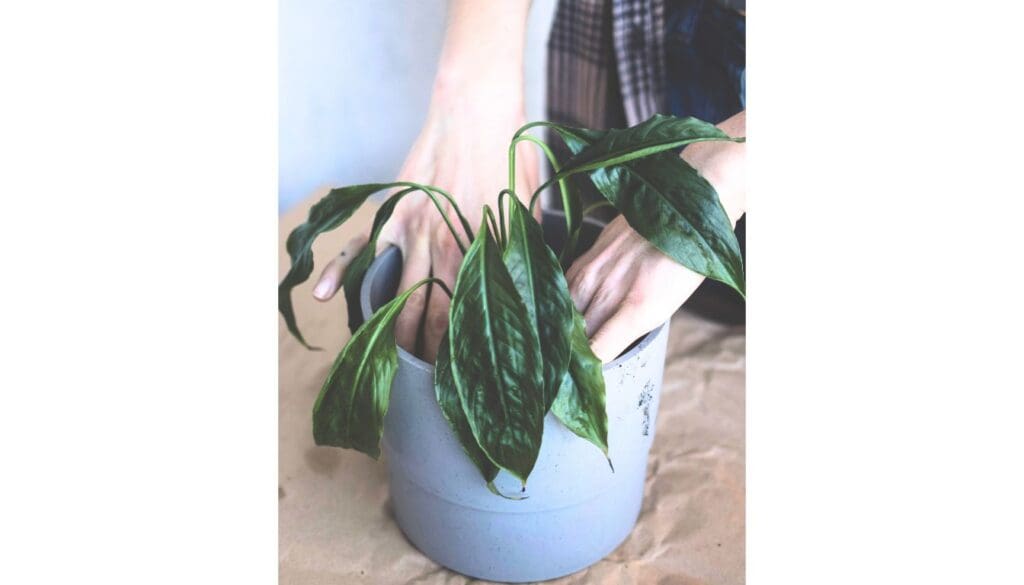
Besides all the significant factors discussed above, other factors can create overall stress and health hazards in your peace lily. Sometimes these lesser-known issues can become a potential cause behind a peace lily dying.
Rootbound condition
Peace lilies can do well in a tight container and continue growing in that pot for years. But if the root ball becomes constricted, it can cause serious harm to the plant.
Although stressful, repotting is the only solution to cope up with this adversity. Here are some helpful tips for a successful repotting:
- Spring is the ideal time for repotting as the plant remains in its growth phase during this time.
- Go for repotting when you observe that the roots have filled the container and are displacing the soil. Another sign is an increased water need by the plant.
- Always go for one size larger than the previous pot but not more than that.
- Try to match and maintain the previous composition of the soil in the new pot mix.
- Avoid fertilizing your plant for the next two months after repotting to avoid building up any stress.
Also read: Do Peace Lilies Like To Be Root Bound? (+When To Repot)Do Peace Lily Attract Bugs? (Identification+How ToGet Rid Of Them)
Nutritional deficiency

Peace lilies are light feeders, and undernutrition is not an adverse hazard for them. But in some instances, lack of essential macronutrients can lead to sluggish growth and pale and discolored leaves.
This problem is easy to solve. Check out the essential measures to avoid such consequences.”
Solution:
- Apply a diluted solution of general-purpose fertilizer every six weeks during the growing season.
- Opt for 20:20:20 NPK (Nitrogen, Phosphorous, Potassium) solution.
- Following a proper dosage, try to apply liquid fertilizers.
- Don’t overfeed. Just follow the general schedule to get back to its healthier state.
Also read: What Kind Of Fertilizer Does A Peace Lily Need? (Peace Lily Fertilizer Ratio)
Soil toxicity
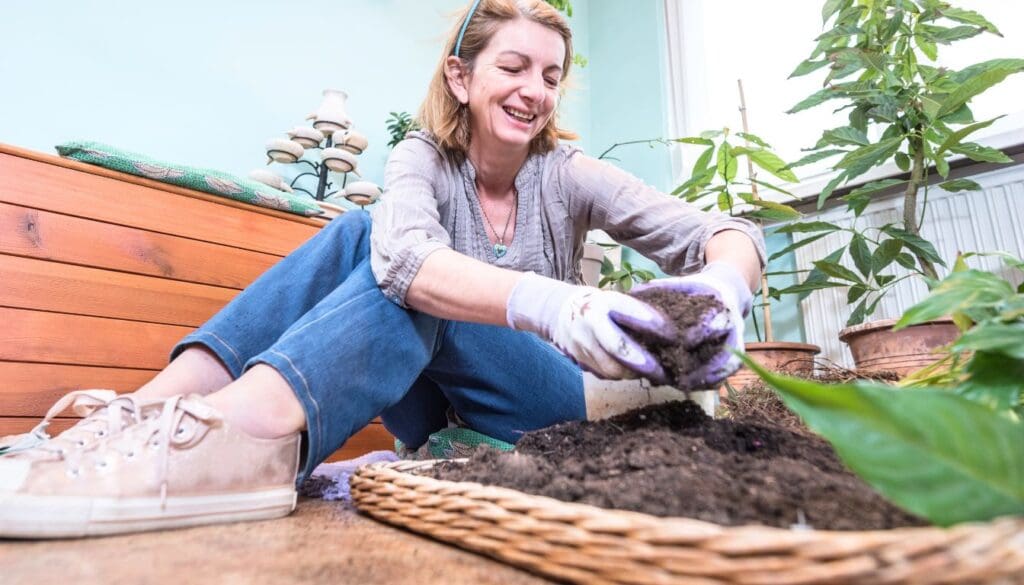
Overfertilization leads to soil toxication by creating salt build-up due to the accumulation of fertilizing residue in the soil. Peace lilies are pretty prone to this problem.
Symptoms include brown leaf tips, dying foliage, stunted growth, yellow leaves, and an overall decline of the plant’s health.
Solution:
- Flushing the soil is highly recommended. Carefully pull out your peace lily from the pot, wash the root system thoroughly with filtered water, and repot the plant in a fresh soil mix that is not too high in nutrient content.
- Reduce the rate of fertilization during the winter months.
- Run an excess amount of water through the soil mix and let it drain out through the drainage holes during watering.
Water quality issue
Tap water is generally high in harmful chemicals like chloride, fluoride, lead. These heavy metals can cause brown tips, leaf curling, dying foliage, and put mineral stress over the plant.
Solution:
- Water from municipal sources is generally treated with chloramine, which, unlike chlorine, does not evaporate easily. You can use an inexpensive dechlorinator to get rid of chlorine and chloride components.
- You can use distilled water to avoid any harmful mineral build-up. Even rainwater can serve the purpose.
- Use room temperature water to avoid shocking the plant with cold.
Relocation
Peace lilies are not overly dramatic about being relocated. But still, like most of the other plants, they too need some time to get accustomed to the new environment.
If you shift your peace lily to a remarkably different spot or a more deprived spot in terms of environmental factors, the plant may become weak.
Although relocating the plant does not cause crucial damage, keep patience if your plant is not performing well. Don’t make any further changes until the plant recovers.
Also read: Where Should Peace Lily Be Placed? (Ideal Spot+Placement Tips)
Final words
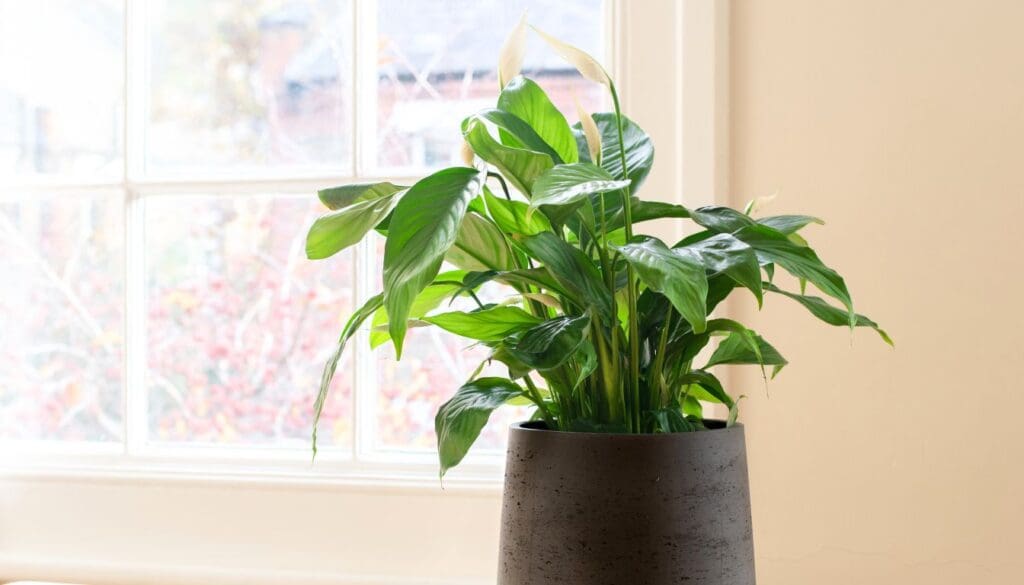
Many signs can signify that your peace lily is dying, but if you take action on time, you will be able to save your peace lily with little effort.
However, in severe cases like root rot or other fungal diseases, you might need to repot your peace lily after removing the damaged parts to see the best results.
The best way to avoid unnecessary problems that make your peace lily weak is to keep monitoring your plant and taking the correct steps whenever you notice anything unusual. This will save the plant from all the trouble and also require less effort from your end.
Also read: How To Care For Peace Lily Indoor? (Ultimate Care Guide)
Ref: ScienceDirect, NCBI, University of Vermont, Nationalgeographic, NC state university, University of Florida, The University of Arkansas, Queensland Government.
Recommended Garden Supplies
| Product Image | Our Recommended Gardening Supplies | Check Offers! |
|---|---|---|
Top Top
Top
Top
Top
Top
Top
Top
Top | rePotme Houseplant and Tropical Classic Potting Soil Mix | Check Offer On Amazon |
 Top
Top
Top
Top
Top
Top
Top
Top | Espoma Organic Indoor Plant Food | Check Offer On Amazon |
 Top
Top
Top
Top
Top
Top
Top
Top | GooingTop LED Grow Light 6000K Full Spectrum Clip Plant Growing Lamp | Check Offer On Amazon |
 Top
Top
Top
Top
Top
Top
Top
Top | Soil Moisture Meter | Check Offer On Amazon |
 Top
Top
Top
Top
Top
Top
Top
Top | Govee Hygrometer Thermometer, Bluetooth Enabled! | Check Offer On Amazon |
 Top
Top | LEVOIT Humidifiers for Large Room(Best For Plants) | Check Offer On Amazon |
 Top
Top
Top
Top
Top
Top
Top
Top | Upgraded DIY Automatic Drip Irrigation Kit, 15 Potted Houseplants Support | Check Offer On Amazon |
 Top
Top
Top
Top
Top
Top
Top
Top | Stainless Steel Heavy Duty Gardening Tool Set | Check Offer On Amazon |
 Top
Top
Top
Top
Top
Top
Top
Top | Bonide Insecticidal Soap | Check Offer On Amazon |
 Top
Top
Top
Top
Top
Top
Top
Top | Bonide 32 oz Spray Neem Oil for Organic Gardening | Check Offer On Amazon |
 Top
Top
Top
Top
Top
Top
Top
Top | Garden Safe Fungicide | Check Offer On Amazon |


